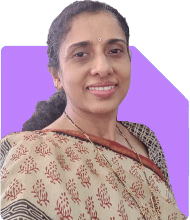Can I retire at 51 with INR 1.3 Cr in investments?
Ramalingam Kalirajan |9854 Answers |Ask -Follow
Mutual Funds, Financial Planning Expert - Answered on Nov 05, 2024
He has an MBA in finance from the University of Madras and is a certified financial planner.
He is the director and chief financial planner at Holistic Investment, a Chennai-based firm that offers financial planning and wealth management advice.... more

Dear Mr. Ramalingam Kalirajan, I am 51 years old, single with no dependent. currently I own a portfolio of INR 1.3 Cr in which 40 L is in MF and 10L in Bond and 10L in Gold. 50L in direct Shares and another 20L in Insurance (Ulip). apart from this I have a Flat which is worth of 60L. my Monthly expenses is around 40K, currently I am planning to retire, kindly let me know whether with this investment can I retire keeping life expectancy of 70-80 years. kindly advice.
Monthly Income Needs and Existing Assets
You mentioned monthly expenses of Rs 40,000.
Over a 20-30 year retirement period, inflation may gradually increase this amount. A sustainable withdrawal strategy will help address this.
Given a life expectancy of 70-80 years, a monthly income from investments is essential to meet your needs without depleting your corpus.
Mutual Funds
Your mutual fund corpus of Rs 40 lakh could play a key role in providing regular income.
Actively managed funds, unlike index funds, allow expert fund managers to navigate market conditions. They aim for growth even in uncertain markets.
These funds can also be diversified across equity and debt categories to maintain balance. Equity funds can support growth, while debt funds can offer stability and liquidity.
Suggested Action
Retain and build your mutual fund corpus. Regular funds through a Certified Financial Planner (CFP) and Mutual Fund Distributor (MFD) offer guidance, minimizing risk while aiming for returns.
Setting up a Systematic Withdrawal Plan (SWP) can provide monthly income in a tax-efficient manner. SWP helps maintain principal while generating steady cash flow.
Direct Share Investments
With Rs 50 lakh in direct shares, your exposure to the equity market is significant.
Direct shares can be volatile and may not always align with the cash flow needs of retirement.
However, with proper management, shares may serve as a growth engine in your portfolio.
Suggested Action
Gradually shift part of your direct shares to diversified equity mutual funds. They provide professional management, spreading risk across sectors and companies.
Review the remaining stocks for potential dividends. Dividend-yielding stocks can complement your monthly cash flow needs.
Bond Investments
Your Rs 10 lakh in bonds offers stability but limited growth. Bonds are more effective as a balance to higher-growth assets like equities.
Bonds have fixed interest, but they may not keep up with inflation. Over time, they could lose purchasing power.
Suggested Action
Retain some bonds for safety but consider partially reallocating to debt mutual funds. Debt funds offer liquidity and potentially better post-tax returns than traditional bonds.
Maintain a mix of short and medium-term debt funds. These provide safety while possibly enhancing returns over traditional fixed-income instruments.
Gold Holdings
Gold can serve as a hedge in times of market volatility, and your Rs 10 lakh in gold contributes to a diversified portfolio.
However, gold alone may not generate regular income. It is more useful for capital preservation.
Suggested Action
Keep your gold as a long-term hedge but avoid expanding your holdings in gold.
For income generation, focus on growth-oriented assets like equity or hybrid funds, which combine equity and debt in a balanced manner.
Insurance (ULIP)
Your Rs 20 lakh in a Unit Linked Insurance Plan (ULIP) provides both insurance and investment. However, ULIPs can come with high charges and may not yield optimal returns.
Suggested Action
It is advisable to consider surrendering or partially exiting the ULIP.
Reinvest the proceeds into mutual funds, which offer greater flexibility, transparency, and cost-efficiency. A term insurance policy can cover any remaining insurance needs.
Real Estate
You own a flat valued at Rs 60 lakh, which can provide security or rental income if required. However, real estate as an asset is typically illiquid, and immediate access to funds can be challenging.
Suggested Action
If rental income isn’t feasible, consider whether this asset aligns with your retirement goals. Selling the property can free up funds for more liquid investments.
Alternatively, keep it as a fallback option but prioritize liquid and income-generating investments for cash flow needs.
Creating a Sustainable Income Stream
To cover Rs 40,000 monthly expenses, an ideal approach is to create a mix of income sources from your portfolio:
A Systematic Withdrawal Plan (SWP) from equity and hybrid mutual funds could provide monthly income while maintaining the principal.
Dividends from shares, if selected well, can further support your cash flow.
For liquidity, a portion in debt mutual funds or bonds can cover emergencies.
Optimizing Tax Efficiency
Long-term capital gains (LTCG) on equity mutual funds above Rs 1.25 lakh are taxed at 12.5%, and short-term gains at 20%.
Debt funds, on the other hand, are taxed per your income tax slab.
Setting up withdrawals strategically can help minimize tax impact and extend the life of your corpus.
Maintaining Emergency Funds
Since you are planning for a lengthy retirement, set aside a portion of liquid assets as an emergency reserve. This could be a mix of cash, liquid mutual funds, and short-term debt funds.
A sufficient emergency fund provides a buffer without disrupting your main investment portfolio.
It ensures that you won’t need to liquidate assets in unfavorable market conditions.
Healthcare Planning
Without dependents, healthcare planning is crucial to address any unforeseen medical expenses. Consider a robust health insurance policy to minimize out-of-pocket costs.
If you already have health insurance, evaluate the coverage for adequacy.
Top-up plans can provide extra protection without a large increase in premiums.
Finally
Your retirement plan appears well-structured with diversified investments, yet a few refinements could ensure financial security. By consolidating your portfolio for income generation and stability, you can enjoy a comfortable and financially independent retirement.
Best Regards,
K. Ramalingam, MBA, CFP,
Chief Financial Planner,
www.holisticinvestment.in
https://www.youtube.com/@HolisticInvestment
You may like to see similar questions and answers below
Ramalingam Kalirajan |9854 Answers |Ask -Follow
Mutual Funds, Financial Planning Expert - Answered on May 16, 2024
Ramalingam Kalirajan |9854 Answers |Ask -Follow
Mutual Funds, Financial Planning Expert - Answered on Sep 30, 2024
Ramalingam Kalirajan |9854 Answers |Ask -Follow
Mutual Funds, Financial Planning Expert - Answered on Nov 08, 2024
Radheshyam Zanwar |5831 Answers |Ask -Follow
MHT-CET, IIT-JEE, NEET-UG Expert - Answered on Jul 26, 2025
Dr Deepa Suvarna |163 Answers |Ask -Follow
Paediatrician - Answered on Jul 26, 2025
Radheshyam Zanwar |5831 Answers |Ask -Follow
MHT-CET, IIT-JEE, NEET-UG Expert - Answered on Jul 26, 2025
Radheshyam Zanwar |5831 Answers |Ask -Follow
MHT-CET, IIT-JEE, NEET-UG Expert - Answered on Jul 26, 2025
Radheshyam Zanwar |5831 Answers |Ask -Follow
MHT-CET, IIT-JEE, NEET-UG Expert - Answered on Jul 26, 2025
Radheshyam Zanwar |5831 Answers |Ask -Follow
MHT-CET, IIT-JEE, NEET-UG Expert - Answered on Jul 26, 2025
Nayagam P P |9447 Answers |Ask -Follow
Career Counsellor - Answered on Jul 26, 2025
Nayagam P P |9447 Answers |Ask -Follow
Career Counsellor - Answered on Jul 26, 2025
Anu Krishna |1655 Answers |Ask -Follow
Relationships Expert, Mind Coach - Answered on Jul 26, 2025
Nayagam P P |9447 Answers |Ask -Follow
Career Counsellor - Answered on Jul 26, 2025





















